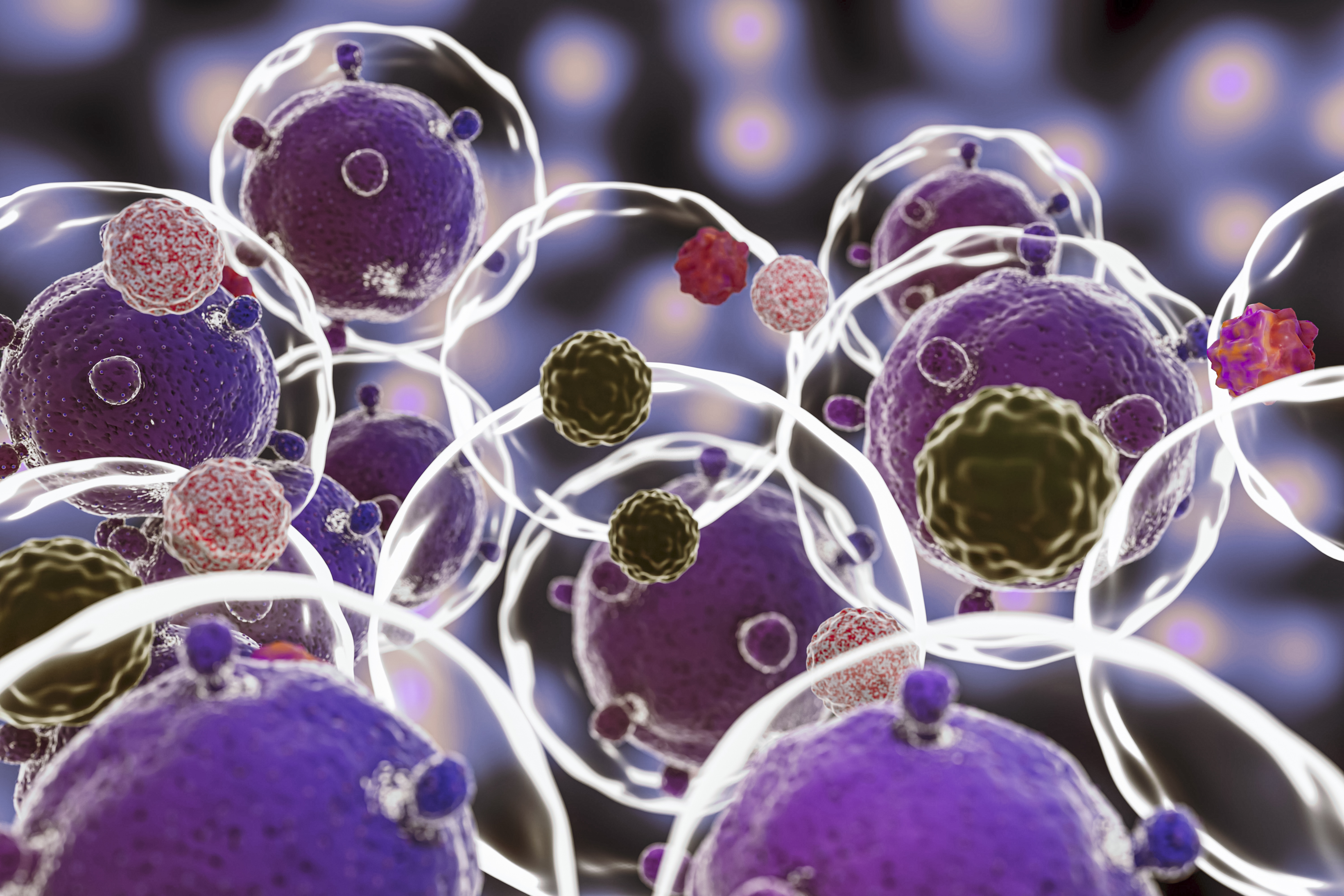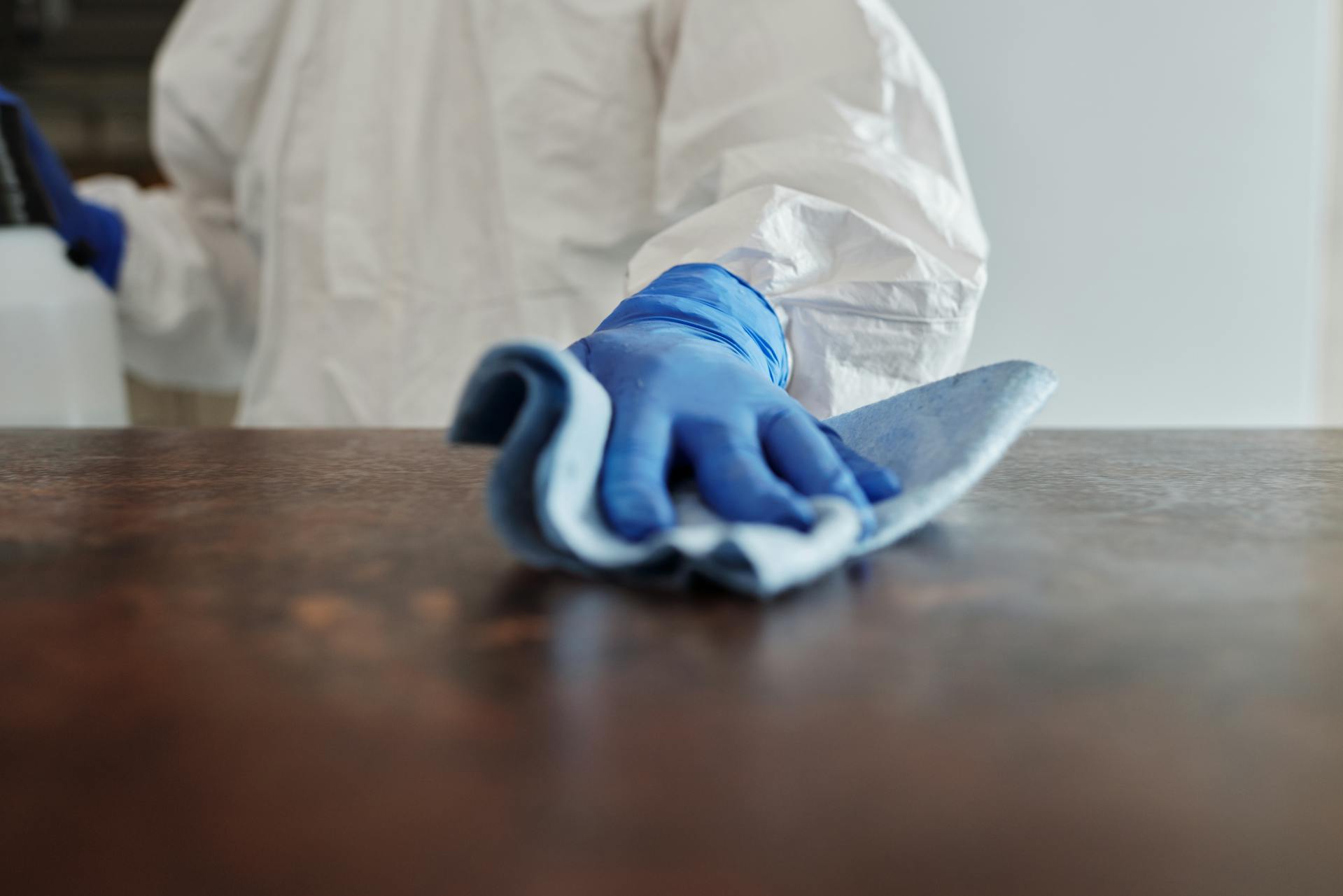Community services settings such as residential facilities can be ideal places for the spread of infections and disease.
The coronavirus disease 2019 (COVID-19) pandemic highlighted the increased risk of serious illness in vulnerable people and the need to protect them from community infection. Older people and people with disabilities are more often prone to catching transmissible diseases such as gastroenteritis, influenza and COVID-19 and can become sicker from these transmissible diseases than others in the community.
Measures to prevent and manage infection are, therefore, especially important in these settings and in other places where vulnerable people live and visit. These measures are called infection control. Infection control describes the steps undertaken to prevent and minimise the level of infection in a healthcare environment.
Infection control is an important legal requirement of everyone working in community services settings, including managers, support workers, ancillary workers and visiting professionals. It is also important to encourage and support residents, clients, family members and visitors to take part in these practices wherever possible.

Image by Fusion Medical Animation, Unsplash, Unsplash licence
Infection and disease
Infections and infectious diseases in humans are caused by the multiplication and invasion of tiny disease-causing microorganisms that gain entry to our body.
A microorganism or microbe is a tiny cell that can sometimes cause disease and infection in people and animals. Microorganisms are everywhere – in the air, on things that we touch every day and on our bodies. They are important to biology and to our environment. They perform many valuable functions, including:
- breaking down food and organic waste to return it to the soil for nutrients and fertilisation
- producing fuel and enzymes in our bodies
- providing essential gut health.
Microorganisms can multiply and live in a range of different conditions. Some are adapted to extremes such as very hot or very cold conditions and high pressures.
Pathogens
Some microorganisms have adapted to live and multiply in the human body in ways that cause illness, disease and even death. These types of microorganisms are called pathogens.
Pathogens can be classified into four groups according to their physical appearance and properties.
 Read to learn more
Read to learn more
Select the arrows to move through the slides and learn more information about their classification, properties or features and an example of each.
The relationship between a pathogen and a host
Pathogens need a human or other hosts to continue to live and multiply. Several types of microorganisms often colonise on humans without causing illness or disease and help to protect us from the growth of harmful pathogens such as fungi. These are called normal flora (or ‘good bacteria’).
Pathogens can multiply and make use of their hosts through the processes of colonisation, infection and disease.
 Select to learn more
Select to learn more
Select each bar to expand and reveal further information about pathogens.
 Select to learn more
Select to learn more
Here are the parts of the chain of infection that must be present for an infection to spread from one host to
another.
Select the items on the image to reveal more information about the chains of infection.
 Watch the video
Watch the video
Watch ‘How to break the chains of transmission’, which outlines how to protect yourself and others from COVID-19.
Make a list of the advice provided in the video about ways to protect yourself from COVID-19.
Means of transmission
Means of transmission refers to the way pathogens spread from one person to another. This can occur in several ways. Here are some examples.
Direct and indirect contact
Direct contact with the microorganism can happen from touching the person and their body fluids. For example, touching a person infected with conjunctivitis and then touching your own eye.
Transmission can also happen through indirect contact, meaning there is no direct contact with an infected person. Rather, transmission occurs through touching something that was touched by the infected person, such as door handles or tables.
Airborne transmission
Some infections, such as the flu, the common cold, COVID-19 and tuberculosis, can spread through the air from droplet spray or airborne particles that come from coughing, spitting, talking or sneezing.

Image by Edward Jenner on Pexels, Pexels Licence
Droplets can live on the surface of benches and contribute to the contact transmission of diseases, such as contracting salmonella in food preparation areas, such as kitchens, that are not cleaned adequately. Droplets can also fall onto food and be ingested by people or be breathed in and spread through respiratory transmission.
Some organisms are so small that they can remain in the air until a person inhales them into their respiratory system. Particles that float or are carried in the air include some types of gastroenteritis, rubella and anthrax.
 Watch the video
Watch the video
Watch ‘Understanding the terms aerosol, droplet and airborne’ to learn more about aerosols, droplets and airborne transmission.
What is the main difference between aerosols and droplets?
Bloodborne transmission
Some life-threatening diseases, such as HIV and hepatitis B and C, are bloodborne, meaning carried by the blood.
Pathogens carry disease from person-to-person when infected blood enters an opening into the body. This includes through an open or uncovered wound or via a contaminated sharp, such as a needle that enters directly into a person’s bloodstream.
 Select to learn more
Select to learn more
Select each bar to expand and reveal further more information on bloodborne diseases.
Vulnerability to disease
Several factors increase the chance of people being infected with pathogens and becoming sick.
People who are more likely to contract illnesses and become sick with or die from an infection are called susceptible hosts. They include older people, people with a chronic illness and people with lowered immunity.
The immune system consists of cells that fight infection. White blood cells remember the type of infections that a person has previously had and can quickly overcome them if they encounter them again. A person with a weakened immune system cannot fight infectious diseases well. In some cases, their immune system cannot fight them at all.
Some bacteria may have little or no effect on a healthy person but can have serious health effects on susceptible hosts.

Image by Freepik, Freepik, Freepik licence
 Read to learn more
Read to learn more
Find out more about white blood cells at the Cleveland Clinic website.
Vulnerable clients or residents
People who are more vulnerable to disease include:
- people with diseases that affect the immune system, such as HIV or leukaemia
- people who have chronic medical conditions, such as diabetes, multiple sclerosis or arthritis
- people who are taking medications that suppress the immune system
- people over 65
- young children and new-born infants who need to develop their immune systems (breastmilk is one way infants can gain additional support for their immune systems)
- some groups of people, including people from Aboriginal or Torres Strait Islander descent, are known to be at higher risk of serious complications or death from conditions like COVID-19.
As we saw with COVID-19 infections, aged care facilities can be similar to a cruise ship, as both are ideal places for pathogens to multiply and spread. There are many reasons for this:
- Workers may spread viruses and bacteria as they move from person to person while in contact with body fluids, and residents live in close proximity to each other.
- Older people are more likely to have weakened immune systems, which places them not only at greater risk of infection, but also at higher risk of serious illness.
Workers at higher risk
Some support workers may have an increased risk of acquiring infections and have a responsibility to ensure their own health and wellbeing.
 Select to learn more
Select to learn more
Select the items on the image to reveal more information on conditions that may put you at risk.
Common infection hazards
Infection hazards are situations where infections are more likely to spread and cause harm. Infection hazards can pose risks to both workers and clients. You need to be alert to infection hazards in the environment to help understand how they can be reduced.

Image by Matilda Wormwood on Pexels, Pexels Licence
 Read to learn more
Read to learn more
An infection risk is the potential consequences of being exposed to the infection hazard, such as developing a
serious disease.
Select the arrows to move through the slides to view examples of infection risks and hazards in community services’ workplaces and the types of infections that can be spread.
Antibiotics are used to control infectious bacterial disease in people and prevent death or severe illness. Due to an overuse and inappropriate prescribing of antibiotics, some diseases and infections that were once easily treated are now resistant to our strongest antibiotic treatments.
MRSA is the most common of the antibiotic-resistant infections that affect humans. MRSA has evolved from strains of
staph that have built up resistance to the penicillin-derived antibiotic methicillin, which was used to treat staph
infections since the 1950s. MRSA can cause infections of the skin as well as life-threatening infections of the
brain, bones, heart, blood vessels and lungs.
MRSA is spread from a worker’s hands to a person with an open wound. Handwashing is one of the most effective ways to prevent the spread.
 Read to learn more
Read to learn more
Find out more about MRSA through this consumer factsheet.
 Check your understanding
Check your understanding
Fill in the blanks by dragging the words into the correct place, then select ‘Check’ to see if you are correct.
Background Colour
Font Face
Font Kerning
Font Size
Image Visibility
Letter Spacing
Line Height
Link Highlight
Text Colour